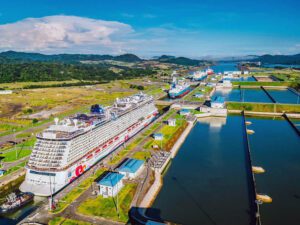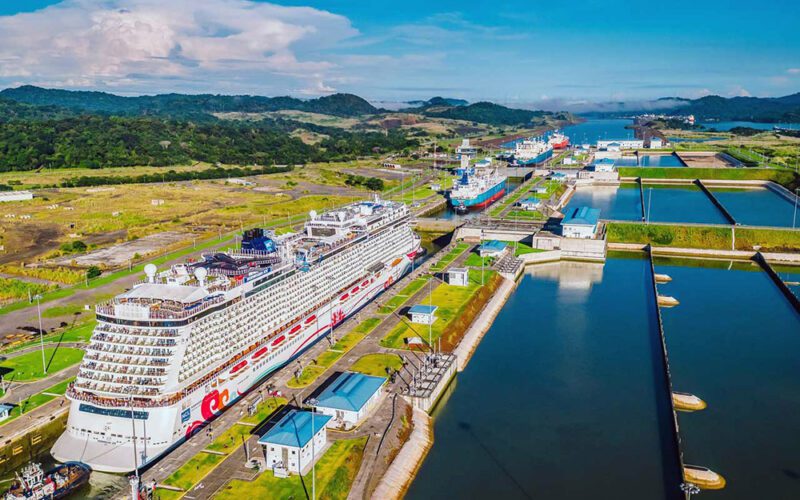
The Panama Canal recently made a handful of changes to its operations, all of which were spurred by an ongoing drought that has hampered the flow of vessel traffic through the waterway.
As of Nov. 1, the average number of transits through the Panama Canal is 31 transits per day: nine through the Neopanamax locks and 22 through the Panamax locks.
The number is a slight decrease from the 32 daily transits previously allowed. The change was announced by the Panama Canal Authority in late September.
Additionally, as of Oct. 1, modifications to the Canal’s Fresh Water Surcharge (FWS) took effect at the Panama Canal as part of efforts to manage the maximum draft available to transit the Canal, with the stated objective of reserving water and improving lake levels impacted by the lack of rainfall.
With the adjustment to the FWS, and given the current level of Gatun Lake, Panama Canal customers will receive a reduction of about 50% in the variable rate, compared to the current formula, according to the Panama Canal Authority.
The average reduction for a Neopanamax vessel is B/.19,700 per transit and for a Panamax vessel B/.6,800 per transit.
Over the past few months, changes in rainfall patterns that have affected the availability of water in the Panama Canal’s lake system, the main source of water for more than 50% of the population and to guarantee the operation of the interoceanic waterway, led the Canal to adopt measures to optimize its use, including the FWS, starting in 2020.
The FWS is applicable to all vessels over 125 feet in length overall (LOA) transiting the Canal.
This year has been recorded as the driest year for the Canal since the Neopanamax locks have been operating at full capacity in 2016, which has progressively reduced the Canal’s reservoir levels.
“Specialists closely monitor the development of climatic events that affect water availability in the Canal Watershed and have warned that the El Niño phenomenon will aggravate the situation for the coming months,” the Panama Canal Authority said in a statement.
El Niño is a band of warm ocean water that develops in the central and east-central equatorial Pacific Ocean and disrupts normal weather patterns, leading to intense storms in some places and droughts in others.
In Panama, it’s expected to bring warmer-than-normal temperatures, meteorologists have said.
In addition to the transit number and Fresh Water Surcharge adjustments, the Authority recently made changes to the booking system, albeit temporary ones. The daily transit reservation quotas were adjusted to a maximum of 30 reservations: eight in the Neopanamax locks and the difference in the Panamax locks.
“To allow customers to adjust their itineraries and reduce waiting times for vessels that do not have a reservation, (the change) will be in effect from October 4 to 31, limiting the total number of reservations at the Panamax locks to a total of 14,” the Authority explained in a statement.
“This measure makes it possible to manage the number of vessels on standby and ensures that vessels en route or in queue, which have not been booked, can transit within reasonable timeframes,” the statement continued.
The adjustments were made to manage the water shortage and administrate transits, which the Authority said allowed the Canal to stabilize waiting times for customers.
“It is worth noting that, despite weather conditions, the Panama Canal has maintained the number of vessels waiting at standard levels for the season,” the Canal Authority said in a statement.

